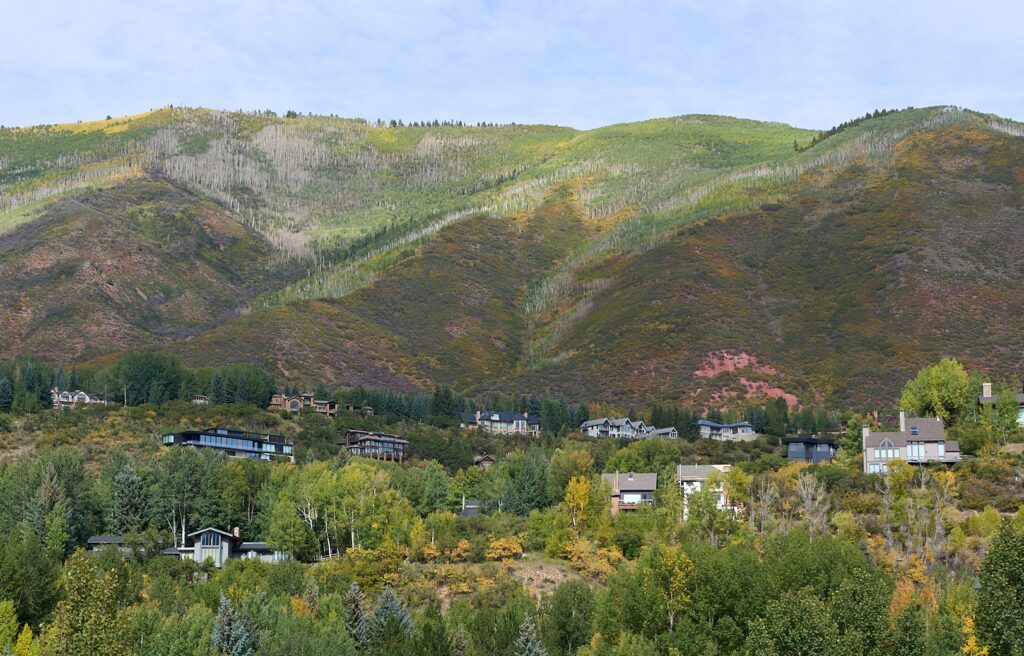Snow for All
ACES Staff
March 10, 2016
What does snow mean to you? For some, it recollects cold days spent inside by a warm fire, while for others snow means the opportunity to ski, sled, toss around snowballs, or build a snowman. Winter invites us to explore what snow means to us and some of the ways snow impacts our lives, as well as the lives of plants and wildlife. This month at ACES at Hallam Lake, we invite locals and visitors to learn about and explore snow!
There are thousands of different words for snow across all languages and dialects. Eskimos alone have 50 ways to describe snow in various Inuit dialects, and the Sami people of northern Scandinavia and Russia have over 180 words to describe the variations of snow and ice. “Aqilokoq”, for example, is used to describe softly falling snow, while “pukak” is a word for crystalline powder snow that reminds us of grains of sugar. Snow can be icy, fluffy, wet, thick, packed down, or powdery, so it’s no surprise that indigenous cultures from arctic regions label snow based on characteristics like its consistency and location.
Snow signifies the presence of winter, but it likely means something different and evokes a unique response depending on people’s interests. A photographer or snow scientist might marvel at the wonder of snowflakes and their intricate patterns. While every snowflake is unique, crystallography, the study of crystal structures of solids, reveals that there are in fact 35 different baseline structures of snowflakes created by variations in atomic arrangements. It is possible to discern which of the 35 categories each snowflake falls into using an X-ray, and we can actually see the variations of individual snowflakes using microscopes or microscopic photography. Up close photographs of snowflakes reveal their incredible details, making them both scientifically fascinating and aesthetically pleasing!
A skier will probably view fresh snowfall as an opportunity to enjoy some time on the mountain, while a ski patroler might look at that same snowfall as a potential safety hazard. When snow collects on drifts and ridges, its weight can eventually become more than the underlying snowpack can support. Avalanches occur when a slab of snow comes loose and slides, gaining momentum as gravity carries it further downhill. Dangerous avalanches can be triggered by strong winds or a passing skier, and most frequently occur in areas where the slope angles at 30 to 45 degrees. Drastic weather changes can also increase the chance of an avalanche. Back-country skiers and ski patrol must be acutely aware of these risks, especially after a heavy snowfall.
Despite snow-safety concerns, there are plenty of ways to enjoy winter and the snow. ACES Naturalists spend their days leading snowshoe tours, educating folks about winter ecology, wildlife biology, natural history, snow science, and more. ACES Naturalist/Educator Phebe Meyers, loves to talk about the ways in which winter allows us to experience landscapes in new ways. On her snowshoe tours, she points out that the snowpack tells a story of animal activity through the tracks they leave behind, which are usually invisible in warmer months. Winter snowpack also provides critical habitat for critters and plants in the subnivean zone, the area between the ground and the snow that insulates and protects small animals from the elements. Some animals thrive in the winter environment, like the snowshoe hare, whose white fur and large paws make it easy to travel quickly and without notice. Other animals, like elk or mule deer, face challenges such as where to finding adequate sustenance.
Perhaps most importantly, snow is a key water reservoir. The Roaring Fork Watershed makes up just 1.3% of the Upper Colorado River Basin, but provides 10.2% of the water that enters Lake Powell. The majority of this water comes from snow as it slowly melts into our river systems. In recent years, we have seen a major increase in early snowmelt due to rising temperatures, longer frost-free periods, and a 500% increase in dust on snow since 2010. While our forests act as a reservoir for holding high elevation snowpack, higher temperatures have thrown off the timing of the snowmelt, affecting overall forest health. In addition, dust particles from agricultural activity in the American southwest, regional oil and gas exploration and motorized recreation accumulate atop the snowpack. The dark particles absorb sunlight, which melts the surrounding snow and has effectively moved peak runoff six weeks earlier since settlement in the 1880s. The combination of less snowfall and early runoff from rapid snowmelt results in major water losses in the big picture and reveals how crucial it is for us to put forth an effort to slow down the effects of climate change.
Each snowstorm gives the story of winter a new layer and reminds us that snow itself is just as dynamic as the ways we experience it and the words we use to describe it. Humans may have to bundle up in colder months, but with snow on the ground, it can actually be easier to explore new places with the right equipment. We hope you appreciate winter as much as we do and continue to explore all it has to offer!
~ Emily Chase
Sources:
https://www.washingtonpost.com/national/health-science/there-really-are-50-eskimo-words-for-snow/2013/01/14/e0e3f4e0-59a0-11e2-beee-6e38f5215402_story.html
http://www.smithsonianmag.com/smart-news/snowflakes-all-fall-one-35-different-shapes-180953760/?no-ist
https://www.sciencenews.org/article/science-avalanches
http://www.huts.org/Community/documents/Avalanche%20Triangle%20Curriculum.pdf
Photo by Zach, age 12, taken in ACES photo classes with Cath Adams.
Related Content

RFV Phenology: Green is out, yellow is in! Or is it?
Learn More
ACES // City of Aspen Open Space Birding: Marolt Open Space 9/5/2024
Learn More